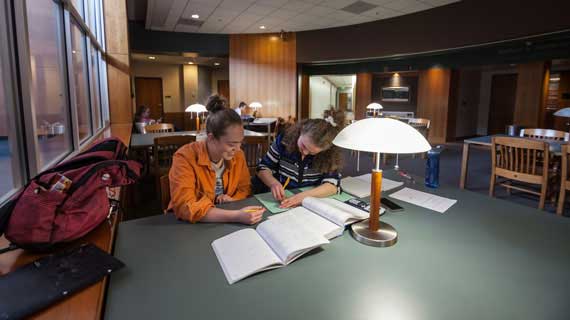Note-Taking Tips for College Students
Posted: January 05, 2024 | Author: Abbie Cochrane | Read Time: 4 minutes

An essential skill for college students is note-taking. Regardless of the course, it’s always a good idea to take notes on material learned in class. Figuring out a solid note-taking system is something that many college students struggle with. Here are some ideas to consider as you start this next semester!
Hand-Written or Typed Notes?
Various studies from universities and research facilities alike have concluded that hand-written notes are more effective when it comes to information retention. Students can lay out their notes in a way that makes sense to them. They can highlight important information or create a hierarchy of material to study in the future. Color coding is also a big trend among college note-takers, differentiating material that is understood, may need to be studied a little more or information that they need to ask the professor about.
Another option is to use abbreviations to help you write faster. Number pages so you know where certain information is, label what you can and keep it short and sweet. Sometimes longer note sections can be more difficult to process, so coming up with a concise definition or explanation can be the most helpful to your memory.
You can also incorporate mnemonic devices into your note-taking. Mnemonic devices are psychological tricks used to help increase your memory by putting information to music or using alliteration to remember things. Some common mnemonic devices include putting information to music (the alphabet song), having a rhyming scheme to remember information (“i before e, except after c”), using acrostics, or spelling out a word or phrase from the first letters of material (PEMDAS); chunking information together, using acronyms and making a connection between the material and something in your life. Learn more about popular and useful mnemonic devices.
Another reason that hand-written notes, while somewhat laborious, are significantly more effective is that you are forced to reword or copy down what someone else is saying, thus creating a stronger mental connection. When notes are in your own words and handwriting, it makes for better short and long-term memory.
Comparatively, typing notes has the speed advantage. Most people type faster than they write. However, sometimes the fastest method of note-taking on a laptop is a bulleted list. Laptop documents often have limited features that allow the user to personalize a document, however, there are many apps and websites available for students to better sort their notes. Try them out and see which one is best for you!
Flashcards
One way to incorporate fast learning and handwritten notes together is through flash cards. Flashcards are good for increasing active recall in the brain. By seeing a term or an image on a flash card, your brain is more able to make connections to the material quickly. Not to mention that actively trying to remember material at the drop of a hat (or the flip of a card) is better for your short and long-term memory. Making physical flashcards or creating flashcards through a site like Quizlet can be helpful for studying anywhere you go!
Asking Questions
Write down any questions you have while learning the material so you remember to ask about it later. Or, write down any questions you find thought-provoking that can help you make stronger connections to the material.
Other Tips to Consider
- Be mindful of where you sit in the classroom. Often, students who sit closer to the front of the class are more likely to get the full scope of information.
- Be neat in your notes - nothing is worse than taking copious notes and going back only to find you can’t read anything.
- That being said, use your space wisely. Having a notebook crammed margin to margin with tiny, illegible notes isn’t helpful to anyone.
- Keep your brain engaged while you write (or type)! Mindlessly taking notes won’t be enough to remember key points.
- Use visual elements. The first way that most children learn is through pictures. Sometimes it’s good to go back to the basics or use diagrams, charts and other visuals.
- Keep track of your sources and cite them correctly when writing a paper. Remember, college papers usually fall under the MLA citation system, but it can also be helpful to learn APA and AP style writing.
- Study. Yes, the most important part of note-taking is that you review your notes later, and often.
Of course, some tricks will work better for some students, so don’t worry if something works better for your friend. Find what note-taking system works for you and expand on it. You know your brain the best. Learn more about note-taking tips and tricks.
Tags: Campus Student Blog Education Majors College Prep Secondary Education Library




